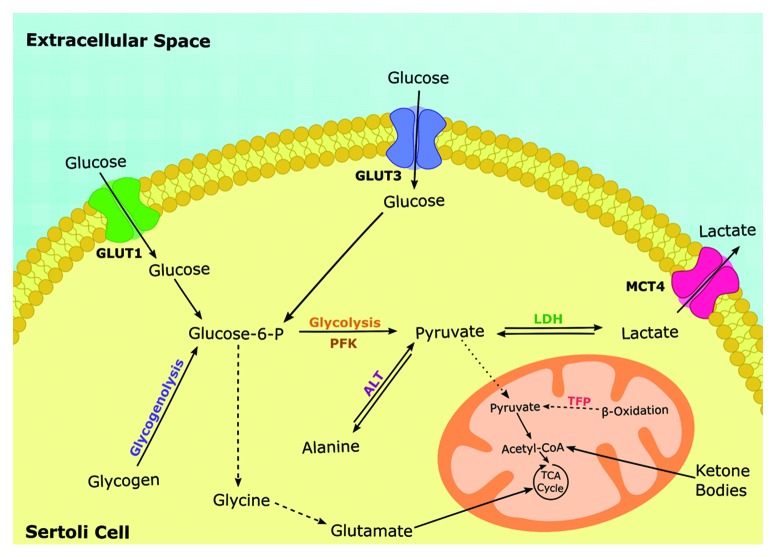Figure 2. Schematic illustration of Sertoli cells (SCs) main metabolic pathways. The SCs are capable of consuming a variety fuels including glucose, lactate, fatty acids and aminoacids. Nevertheless, SCs actively metabolize glucose being the majority of it converted in lactate and not oxidized in the TCA cycle. The extracellular lactate and pyruvate are transported via the members of the family of proton-linked plasma membrane transporters that carry molecules having one carboxylate group, the monocarboxylate transporters (MCT4), while glucose is imported via specific members of the family of membrane proteins called glucose transporters (GLUT1 and GLUT3). Once glucose enters the glycolytic pathway, it is decomposed to pyruvate which can (a) be converted into lactate via lactate dehydrogenase, (b) be converted into alanine via alanine transaminase or (c) be transported to the mitochondrial matrix, oxidized and decarboxylated by the pyruvate dehydrogenase forming the two carbon intermediate Acetyl-CoA which can enter the TCA cycle. The oxidation of these substrates is coupled with ADP phosphorylation via the electron transport chain to form ATP. Abbreviations: TCA, tricarboxylic acid; GLUT, glucose transporter; MCT, monocarboxylate transporter; ALT, alanine transaminase; LDH, lactate dehydrogenase; PFK, phosphofructokinase; TFP, trifunctional protein.

An official website of the United States government
Here's how you know
Official websites use .gov
A
.gov website belongs to an official
government organization in the United States.
Secure .gov websites use HTTPS
A lock (
) or https:// means you've safely
connected to the .gov website. Share sensitive
information only on official, secure websites.
